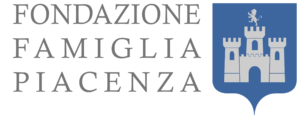
The Piacenza Family Foundation, whose documents have been organized since 1982, was established in 1990. It is located in the villa of Pollone, which the family has been residing in since the first half of the 19th century. The foundation preserves all the materials that the Piacenza family, active in the wool processing and trading industry since the first half of the 17th century and more specifically in the textile industry since the first half of the following century, has accumulated throughout their long history.
the Archive
The archive, which spans nearly a hundred linear meters, primarily consists of family documents, as well as highly relevant records related to the textile business, with a documentary continuity that extends from the mid-18th century to the present day.
Other collections acquired through family connections are also preserved.
Alongside the archival documents, there are also photographic collections, objects, textile samples, historical garments made with Piacenza fabrics, and vintage magazines, mostly related to the field of textile production and fashion.
the Villa
In 1791, when Giovanni Alberto Rossignoli purchased the land and existing buildings in the area, there were only rustic houses, the most significant of which belonged to Agostino Delleani.
Rossignoli had the less important buildings demolished and adapted the main one, constructing the main body of the current Piacenza Palace.
In 1817, Carlo Belletti took over the ownership, and in 1843, he sold the property to Delfino Piacenza.
In 1874, Delfino sold the property to his nephews, Carlo and Felice, who were the sons of his brother Giovanni. Until then, they had been residing in the palace that now serves as the Town Hall of Pollone.
In the early years of the following decade, Felice acquired Carlo's share and became the sole owner of the palace. Thanks to his success in the industrial field, he continuously improved the architectural structure and facilities of the building.
Especially between the years 1900 and 1904, Felice had the facades decorated with pediments above the windows, enhancing the appearance of the palace. He also had a portico constructed, which overlooks the magnificent garden and offers a stunning view of the entire plain below.
the greenhouse
Indeed, the greenhouse has always been a versatile space, reflecting the green soul of the family. Over the years, it has served multiple purposes and functions.
Let's see how it has transformed over the years, from a place of leisure to an environment for cultivation, and even to a set for advertising services.
